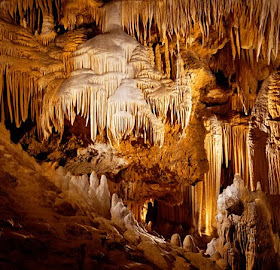Where the Mountain Casts Its Shadow: The Dark Side of Extreme Adventure Book Description
Maria Coffey has contributed to Where the Mountain Casts Its Shadow: The Dark Side of Extreme Adventure as an author. Maria Coffey is originally from England, and now lives on a small island in British Columbia. She and her husband Dag Goering spend part of each year in Ireland, where Dag practises as a large animal veterinarian. They also work as professional sea-kayaking and trekking guides, leading trips in Vietnam, the Solomon Islands, Ireland and Canada. Coffey is the author of a number of internationally published books, including "A Boat in Our Baggage", "Three Moons in Vietnam", "Sailing Back in Time" and two books for children, "A Cat in a Kayak and A Seal in the Family". Her work has also appeared i
Fragile Ecosystem
Eye Candy – Luray Caverns

Virgin cave systems are the last underground frontier to be explored. This can be adventure, cave mapping, cave photography, or any number of reasons to study the rocks or species found below. You need the right clothing, sometimes that is a wetsuit but can vary according to the environment of the cave being explored. No matter summer or winter, a cave will keep a fairly regular temperature. Helmets, boots, knee pads, gloves, even camping might be required if it is a very long caving trip. There are safety techniques and equipment to consider before descending into the vast unknown of geological phenomena hidden away from the above-ground dweller’s view.



No comments:
Post a Comment